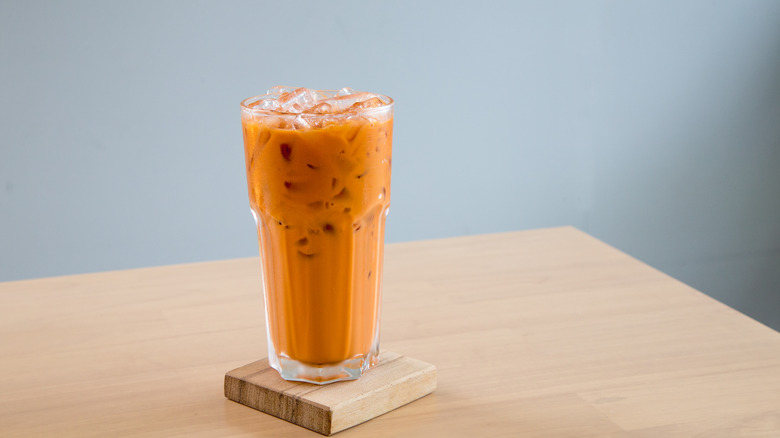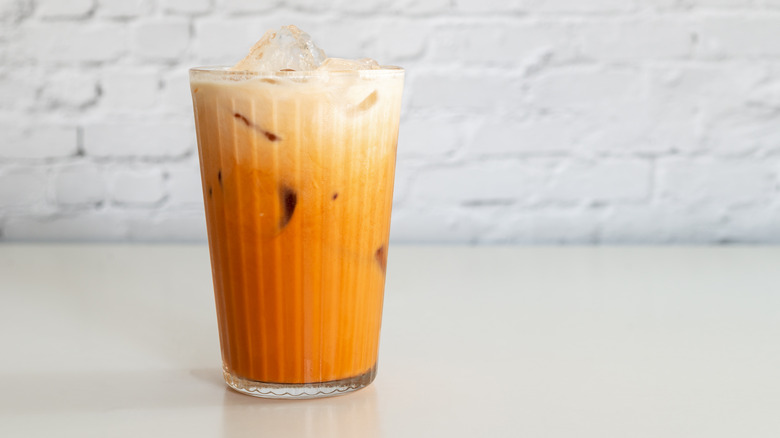The Robust Flavors That Make Thai Iced Tea Stand Out From Other Variations
In Thailand's perpetual tropical heat, it's handy to have a cooling drink in hand. And when it comes to the country's non-alcoholic offerings, there are none more iconic than Thai iced tea.
Although now strongly interlinked with Thai culture, the beverage is actually a relatively young creation, only kicking off in the 1980s. At first, it was simply crafted with condensed milk, ice, and black tea. The beverage was such a fusion evincing Thailand's proclivity to Western flavors — akin to the creation of Hong Kong-style milk tea. However, once the beverage took off in the streets, an assortment of spices and flavorings made the drink entirely Thai.
Today, it's made with loose-leaf black tea spiced with an extensive set of additions, including cinnamon, vanilla bean, cardamom, star anise, tamarind, and occasionally orange blossom essence or almond extract. It's a flavorful but easy-to-sip-on drink once mixed in with ice and condensed milk.
What makes Thai iced tea distinct?
The first, most immediate quality of Thai iced tea is the bright orange color. It's reputed that the practice of dyeing tea with orange food coloring started stateside as a method to appeal to American consumers. However, not all recipes use a dye and will rely solely on tamarind for the burst of hue. This tropical fruit is a distinguishing component of the beverage, lending it a tangy, sweet complexity.
Its refreshing and robust flavor profile is also reflected in the spices. Other spiced teas like masala chai integrate similar ingredients like cardamom and star anise, but these components are infused alongside the milk for a more savory result. In Thai iced tea, they rapidly seep into the brew and condensed milk is only added at the end, which lends a bolder flavor along with the sweetening of sugar. The combination of these ingredients bring in a concentrated aroma that makes it easily stand out from the rest.

